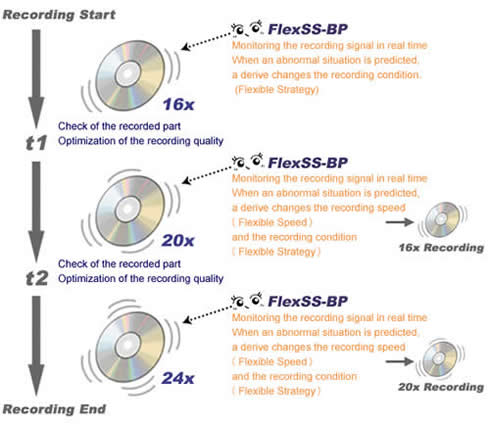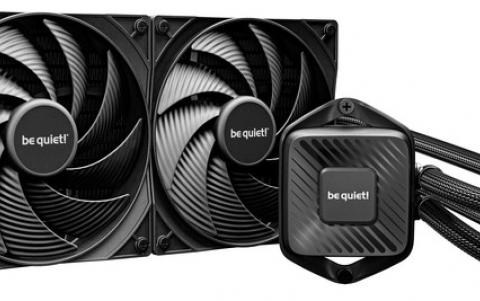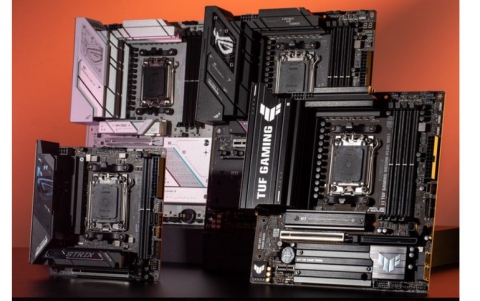Sanyo CRD-BP1500P CD-RW
1. The first 24x recorder is here!
Review Pages
2. Data Tests
3. RW reading tests
4. DAE Tests
5. CDR Tests - Page 1
6. CDR Tests - Page 2
7. RW Writing Tests
8. Conclusion
Sanyo CRD-1500P IDE CDR-W - Page 1
The first 24x recorder is here!
- Introduction:
 We
all knew Sanyo as the leader in the CD recording area, since it shipped first,
the fastest CDR-W drives in the planet. Back in 2000 that was about to change.
Yamaha released the first 16x (even partial CAV) recorder and Sanyo's (real)
16x CLV recorder followed after several months. The race of the fastest recorder
has been warmed up after Yamaha's strike (with 2100E series)..
We
all knew Sanyo as the leader in the CD recording area, since it shipped first,
the fastest CDR-W drives in the planet. Back in 2000 that was about to change.
Yamaha released the first 16x (even partial CAV) recorder and Sanyo's (real)
16x CLV recorder followed after several months. The race of the fastest recorder
has been warmed up after Yamaha's strike (with 2100E series)..
![]() Sanyo
introduced new techniques to rise the recording speed and protect the user from
buffer underruns. The basic three new technologies are the "Zone-CLV"
recording mode, "FlexSS-BP" quality control mechanism and the
"BURN-Proof" anti-coaster technology.
Sanyo
introduced new techniques to rise the recording speed and protect the user from
buffer underruns. The basic three new technologies are the "Zone-CLV"
recording mode, "FlexSS-BP" quality control mechanism and the
"BURN-Proof" anti-coaster technology.
- The New features
![]() (Constant Linear Velocity) is the recording technology used from Sanyo's latest
generation recorders (CRD-BP1500P/CDR-BP5) in order to achieve a higher recording
speed. Most previous recorders used CLV (constant linear velocity aka constant
recording density) as the main recording method. The rotation speed, in the
inside, of a disc at 16x recording speed reaches up to 8000rpm per minute! The
high rotation causes problems to the recorder's mechanism and produces loud
noise. Sanyo developed the Zone-CLV recording method in order to avoid the above
two problems using the latest available technology. When a recorder uses the
Zone CLV recording method, the CD is divided in 3 zones from the inner to the
outer parts of the CD, in which the recording speed varies.
(Constant Linear Velocity) is the recording technology used from Sanyo's latest
generation recorders (CRD-BP1500P/CDR-BP5) in order to achieve a higher recording
speed. Most previous recorders used CLV (constant linear velocity aka constant
recording density) as the main recording method. The rotation speed, in the
inside, of a disc at 16x recording speed reaches up to 8000rpm per minute! The
high rotation causes problems to the recorder's mechanism and produces loud
noise. Sanyo developed the Zone-CLV recording method in order to avoid the above
two problems using the latest available technology. When a recorder uses the
Zone CLV recording method, the CD is divided in 3 zones from the inner to the
outer parts of the CD, in which the recording speed varies.
 As
you can see in the left picture, the recording speed at Zone1 (inner disc) is
16x speed, increases in Zone2 (after t1 time) at 20x speed and reaches 24x-recording
speed at Zone 3 (after t2 time). After that, the drive accesses the recorded
data area, reads and checks them and executes synchronization between the Zone1/Zone2
and Zone2/Zone3 areas. The BURN-Proof technology is used for executing synchronization
between the Zone1/Zone2 and Zone2/Zone3. There isn't any gap between the various
Zones as Sanyo states.
As
you can see in the left picture, the recording speed at Zone1 (inner disc) is
16x speed, increases in Zone2 (after t1 time) at 20x speed and reaches 24x-recording
speed at Zone 3 (after t2 time). After that, the drive accesses the recorded
data area, reads and checks them and executes synchronization between the Zone1/Zone2
and Zone2/Zone3 areas. The BURN-Proof technology is used for executing synchronization
between the Zone1/Zone2 and Zone2/Zone3. There isn't any gap between the various
Zones as Sanyo states.
![]() is the generic name for "Flexible Speed" and "Flexible Strategy".
This new technology is used from Sanyo CRD-BP1500P in order to avoid problems
with bad media (low quality), when writing at 24x (or 20x) speed.
is the generic name for "Flexible Speed" and "Flexible Strategy".
This new technology is used from Sanyo CRD-BP1500P in order to avoid problems
with bad media (low quality), when writing at 24x (or 20x) speed.
The "FlexSS-BP" works in 2 ways. When the drive judges that it hardly can trace the inserted disc correctly -because of the variation of discs including some serpentine tracks and off centred discs- and that the placed disc cannot stand a high power laser at high-speed recording, the drive selects the suitable recording speed for the disc and continues the recording. Thus it monitors the physical condition of disc in real time during record, and it flexibly switches recording speeds in order to maintain the optimum recording condition. In addition, the Flexible Strategy measures and evaluates the recording condition of recorded area at switching zones. Previously, the recording condition could not be checked until the recording had been completed, but a Flexible Strategy drive can restart the recording after the check of pit condition at the recording stop position and the optimisation of the recording parameters.
The "FlexSS-BP" technology sounds similar to "JustSpeed" , from Ricoh, but Sanyo engineers support that it's better: "...The point FlexSS BP is excellent than Just Speed is "that keeps checking from start to finish of writing". Just-Speed cannot change the writing speed once it is fixed at the first stage of writing. But, FlexSS BP can change the writing speed at any time...". On the other hand "FlexSS-BP" sounds exactly like the "SafeBURN" mechanism , from Yamaha, which is also able to drop up and down the recording speed in the full CD area.

![]() has
mainly two new features: the "shockproof operation" and a system
for preventing the "link blocks" previously caused by interruptions
to writing when using BURN-Proof. BURN-Proof avoids the "Buffer-Underrun
error" caused by an "empty" data buffer. It does so by means
of a controller, which, throughout the write process, continuously monitors
the status of the data buffer.
has
mainly two new features: the "shockproof operation" and a system
for preventing the "link blocks" previously caused by interruptions
to writing when using BURN-Proof. BURN-Proof avoids the "Buffer-Underrun
error" caused by an "empty" data buffer. It does so by means
of a controller, which, throughout the write process, continuously monitors
the status of the data buffer.
If the available data drops below 10% of the total buffer capacity, the controller initiates a controlled interrupt to the writing process and sets a write marker. New data is then loaded to the cache and the laser is repositioned. The drive synchronizes the data already written with the new data in the buffer and repositions the laser "behind" the sector most recently written. BURN-Proof also avoids the usual scenario in which CD writing completely locks up your PC. It ensures instead that, throughout the write process, your PC remains fully operational and available for other applications.
- The package
The Sanyo CRD-BP1500P we got was the pre-release OEM drive, which will be used from various companies in retail packages with mostly front/tray changes. The drive uses new IC chipset "LC 898098Y". The front of the drive is the same as with previous Sanyo models. The drive includes 2 leds (Busy, Write), the manual eject hole, the headphone jack/volume control which most CD-Rom/RW drives have and 2 logos - the "BPRec" and the "High-Speed Recording" logo:

- Installation :
 The
Sanyo CRD-BP1500P was installed as Master in the primary IDE BUS. The drive
worked in PIO Mode4 and after booting, identified itself as the "GENERIC
CRD-BP1500P". We unchecked the Auto Insert notification, checked
DMA and rebooted. The drive was a February 2001 model with firmware revision
v6.p32. After a while Sanyo provided us a newer firmware revision V.vz32, which
corrected some of out initial problems. The drive is under developement so there
will be many firmware updates till the final release, which will fix the bugs
we mostly found during our tests. We used Nero v5.5.1.1, CloneCD v3.0.0.9, PadusDJ
v3.00.780 and Ahead InCD v2.11 for the recording tests.
The
Sanyo CRD-BP1500P was installed as Master in the primary IDE BUS. The drive
worked in PIO Mode4 and after booting, identified itself as the "GENERIC
CRD-BP1500P". We unchecked the Auto Insert notification, checked
DMA and rebooted. The drive was a February 2001 model with firmware revision
v6.p32. After a while Sanyo provided us a newer firmware revision V.vz32, which
corrected some of out initial problems. The drive is under developement so there
will be many firmware updates till the final release, which will fix the bugs
we mostly found during our tests. We used Nero v5.5.1.1, CloneCD v3.0.0.9, PadusDJ
v3.00.780 and Ahead InCD v2.11 for the recording tests.
 -
Test Machine
-
Test Machine
WinMe OS
Soyo 7VCA
Celeron II 566 over clocked to 850 MHz
128MB SDRAM PC 133
WD 18GB UDMA 66
Quantum Fireball EX 6.4 GB UDMA 33
DAWI 2975 - PCI (ULTRA) SCSI Host Adapter
ATI AIW 128
Sanyo CRD-BP4 firmware v4.29
Sanyo CRD-BP1400P firmware v5.32
Sanyo CRD-BP1500P firmware vV.vz32
Yamaha CRW2100E firmware v1.0n
PleXWriter PX-W1610A firmware v1.01
Review Pages
2. Data Tests
3. RW reading tests
4. DAE Tests
5. CDR Tests - Page 1
6. CDR Tests - Page 2
7. RW Writing Tests
8. Conclusion













